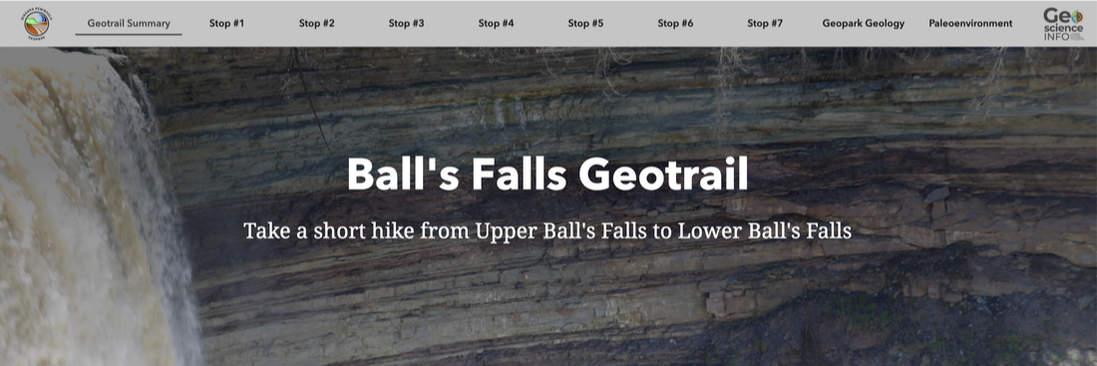GEOSCIENCE COMMUNICATION
|
This project is a collaboration between McMaster University and the APGO Education Foundation supported by Mitacs. We have created geotrails to make geoscience accessible to the public and showcase ongoing research. This initiative is undergraduate student driven with students collecting field data (e.g., digital photography, 360 images, 3D models, drone photography) and selecting points of interest along the trails. My role was to mentor students, research each site and translate scientific reports into an accessible format. The goal of the project is to communicate how rocks deposited over 400 million years ago influence our environment today and document how changing climates could affect us in the future to help our communities make informed decisions.
|
OUTREACH WORKSHOPS
|
Virtual Museum Tour: History of Life on Earth
Travel through geologic time to learn about fossils during a virtual tour of the Smithsonian’s Hall of Fossils. The Earth is over 4 billion years old, but it took a long time for our planet to become a nice place to live. Learn about the creatures that first appeared in the ocean and later moved to land setting the stage for dinosaurs and eventually, humans. You will follow along with the guided tour by placing important events on a one-year calendar. For example, Jan. 1 is the creation of the Earth, while Dec. 31 marks the first appearance of humans. Virtual Field Trips This workshop will include guided virtual field trips using an geotrails and urban geotrails hosted on Geoscience Info. Travel to a time when southern Ontario was a tropical ocean filled with ancient creatures. Following the map, we will stop at local outcrops (where rocks are exposed at the surface) to explore the local rocks and fossils. We will discuss the different sedimentary rocks types, what they can tell us about the ancient environment and how they influence the modern environment (example: agriculture, economy, tourism). Mass Extinctions and Modern Climate Change in the Anthropocene We are currently in a new period of geologic time known as the Anthropocene. This time is used to describe when human activities on Earth started to have significant impacts on the planet’s climate and ecosystems. To learn about modern climate change, we will start by investigating the fossil and geochemical record during mass extinctions. Included in this lesson will be how geologists and paleontologists alike are able to extract this information from rocks and sedimentary structures from across the globe. |
Interested in learning more:
Workshops are currently offered virtually. If you are a school or community group interested in hosting one of these workshops, please contact me. |




